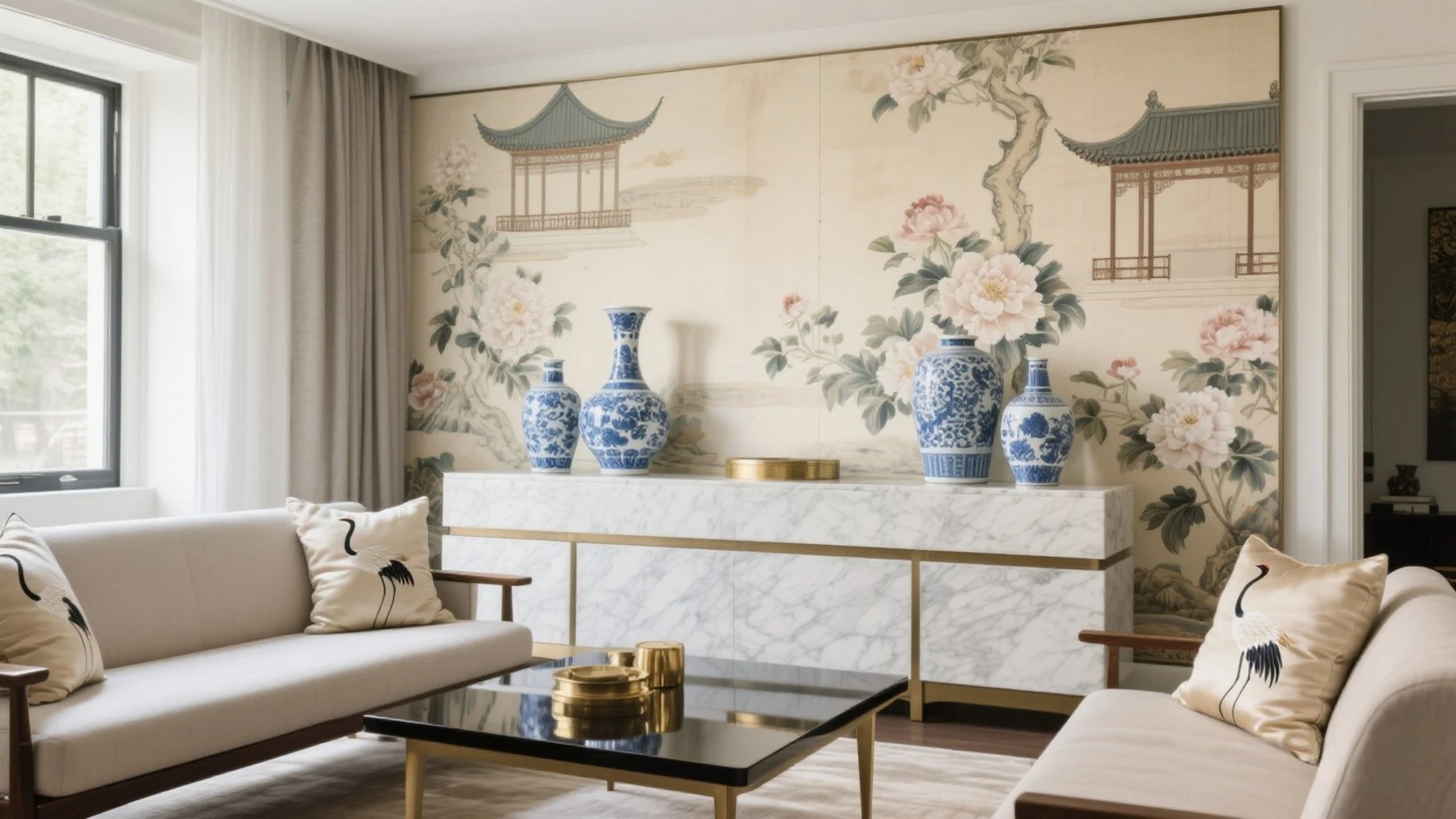 CHINOISERIE REVIVAL IN MODERN WESTERN INTERIOR DESIGN
CHINOISERIE REVIVAL IN MODERN WESTERN INTERIOR DESIGN
There's a quiet but powerful shift happening across the Western design scene.
It's not a military parade or a financial chart that's catching eyes — it's porcelain, silk, and brushstrokes. It's the renewed fascination with Chinoiserie, a style once seen as nostalgic décor but now reborn as a bridge between East and West.
In 2025, Americans are feeling the pulse of China's growth — not just through trade headlines or viral TikToks, but through art prints on their walls and the patterns on their drapes. What once stood for “exotic luxury” now speaks to genuine global curiosity.
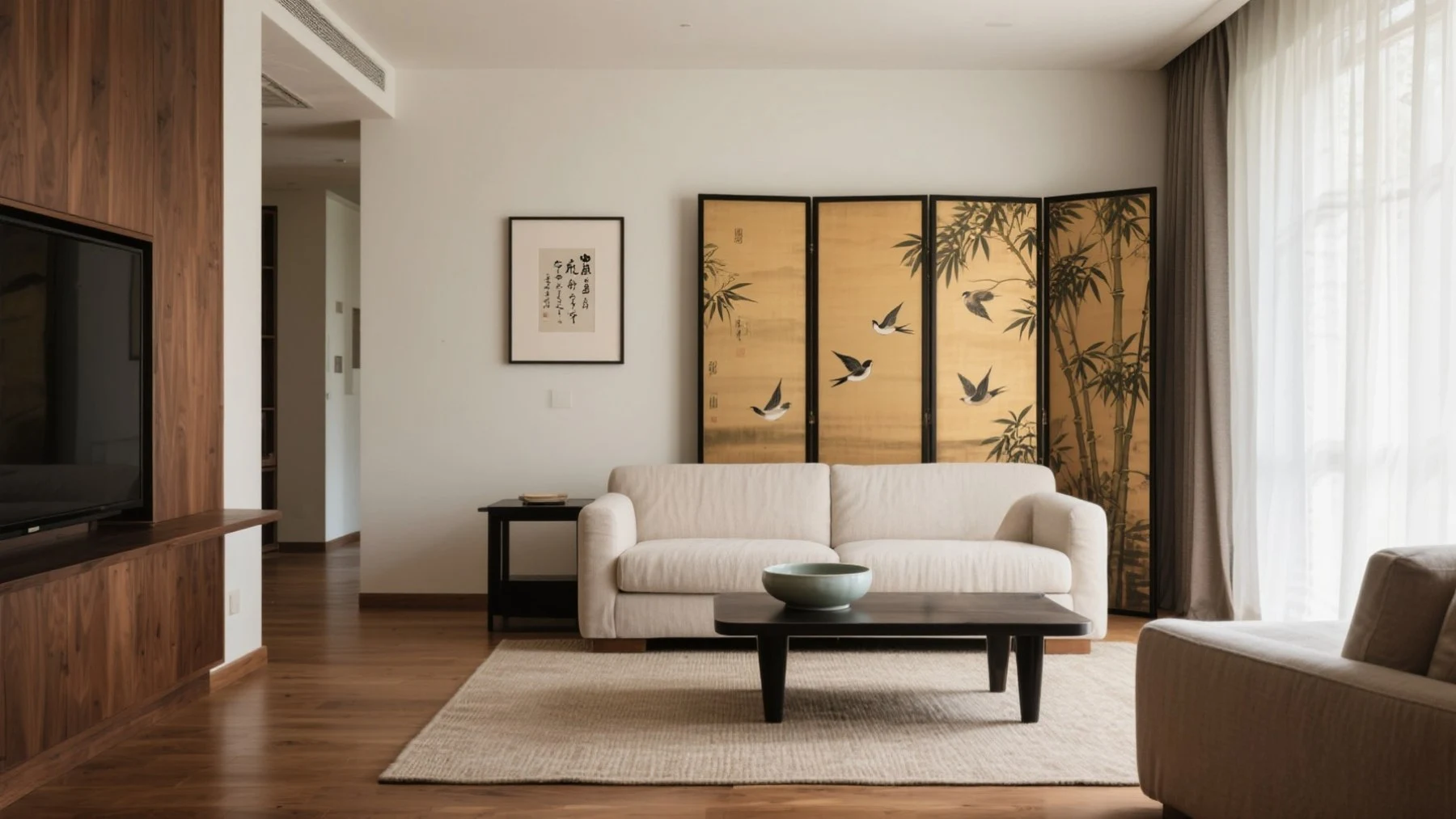 EAST MEETS WEST HOME DECOR INSPIRED BY CHINOISERIE STYLE
EAST MEETS WEST HOME DECOR INSPIRED BY CHINOISERIE STYLE
China's economic expansion, rising military confidence, and cultural visibility have done more than reshape geopolitics — they've reshaped taste. From Los Angeles to London, designers ask not “Why Chinoiserie again?” but “How did we ever let it fade?”
The Power Shift Behind the Pattern
Every style trend hides a bigger story. The return of Chinoiserie isn't just about blue-and-white porcelain vases or cranes dancing across folding screens — it mirrors a world adjusting to new balances.
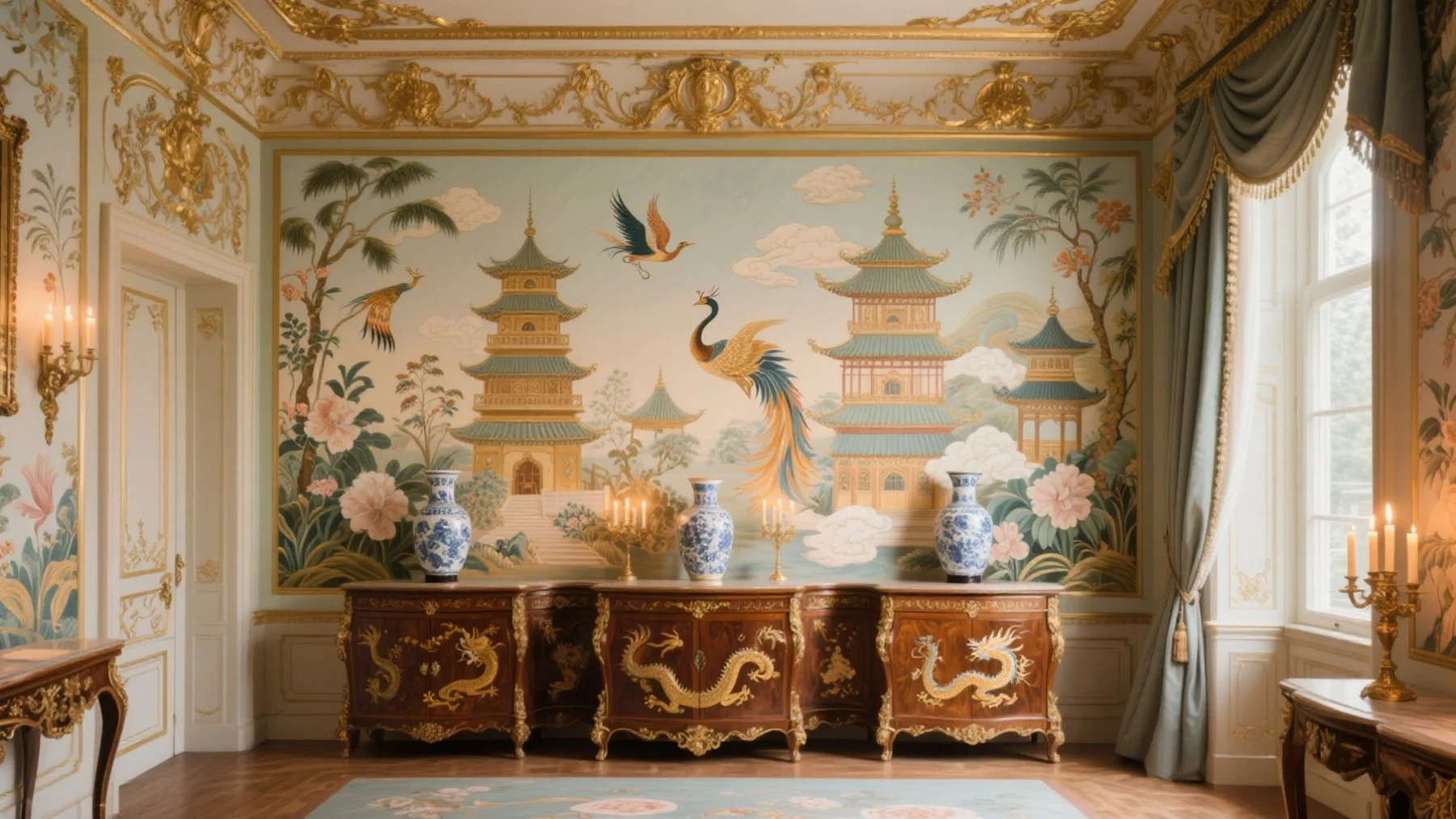 18TH CENTURY EUROPEAN CHINOISERIE ART AND PORCELAIN
18TH CENTURY EUROPEAN CHINOISERIE ART AND PORCELAIN
Back in the 18th century, Chinoiserie was Europe's fantasy of the East: pagodas, dragons, and silken myths. Today's revival springs from a real, visible China — the world's second-largest economy, a tech powerhouse, and a nation unafraid to speak its mind on the global stage.
As China's GDP surged and its Belt & Road Initiative stretched across continents, its influence seeped into creative industries. Western luxury brands now look East out of admiration, not mere curiosity. They see artistry shaped by millennia, craftsmanship carried through dynasties, and symbolism that feels timeless yet modern.
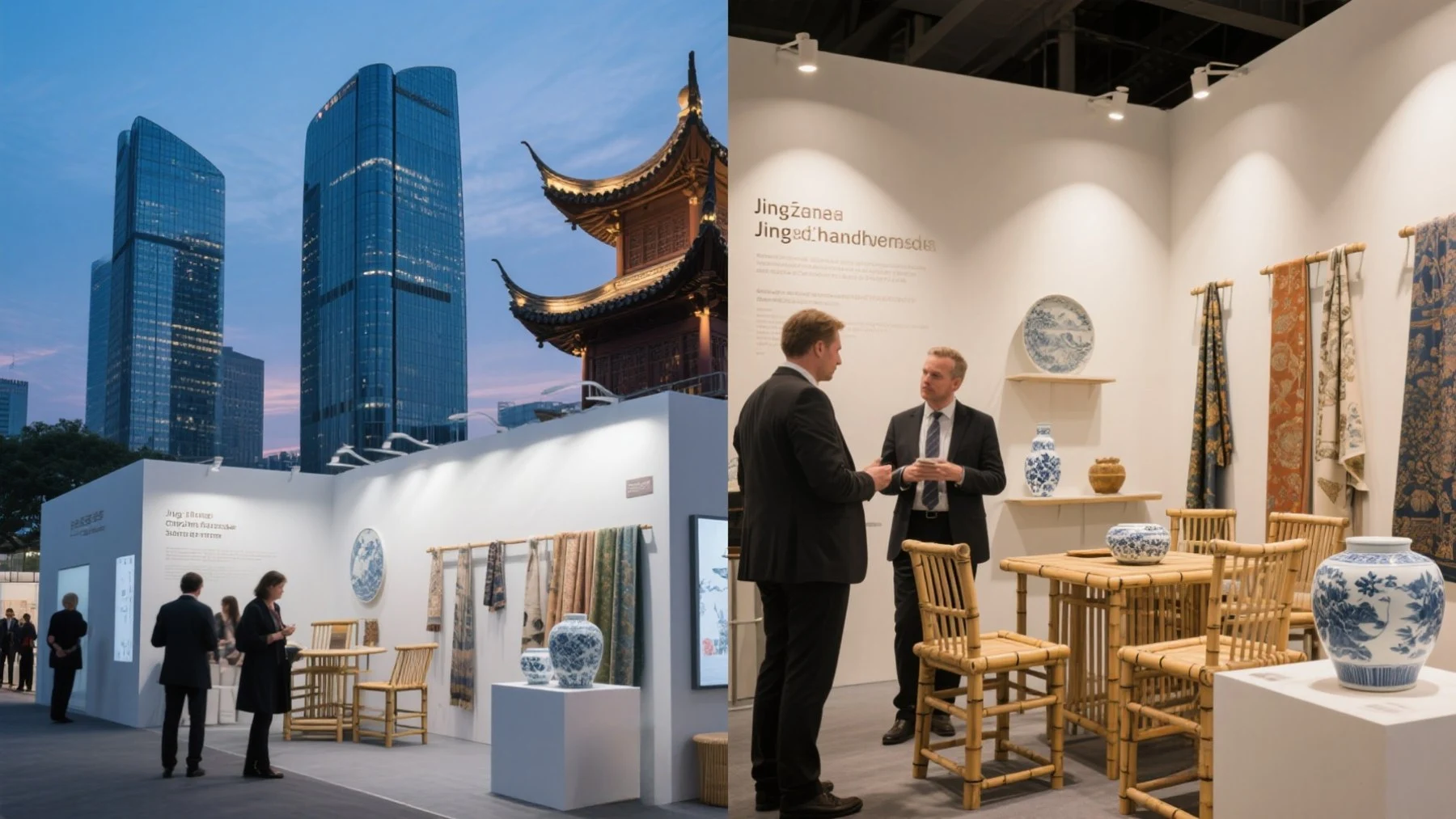 CHINESE ECONOMIC GROWTH REFLECTED IN GLOBAL DESIGN TRENDS
CHINESE ECONOMIC GROWTH REFLECTED IN GLOBAL DESIGN TRENDS
As the saying goes, “When the wind changes, adjust your sails.” Western design has done exactly that — turning toward the East Wind.
Modern Chinoiserie: From Fantasy to Function
Let's be real — today's Chinoiserie looks nothing like your grandma's porcelain cabinet. It's sleeker, more balanced, and kind of a big deal in interior circles. The cranes and peonies are still there, but now they're drawn with minimalist strokes, framed in matte black instead of heavy gold.
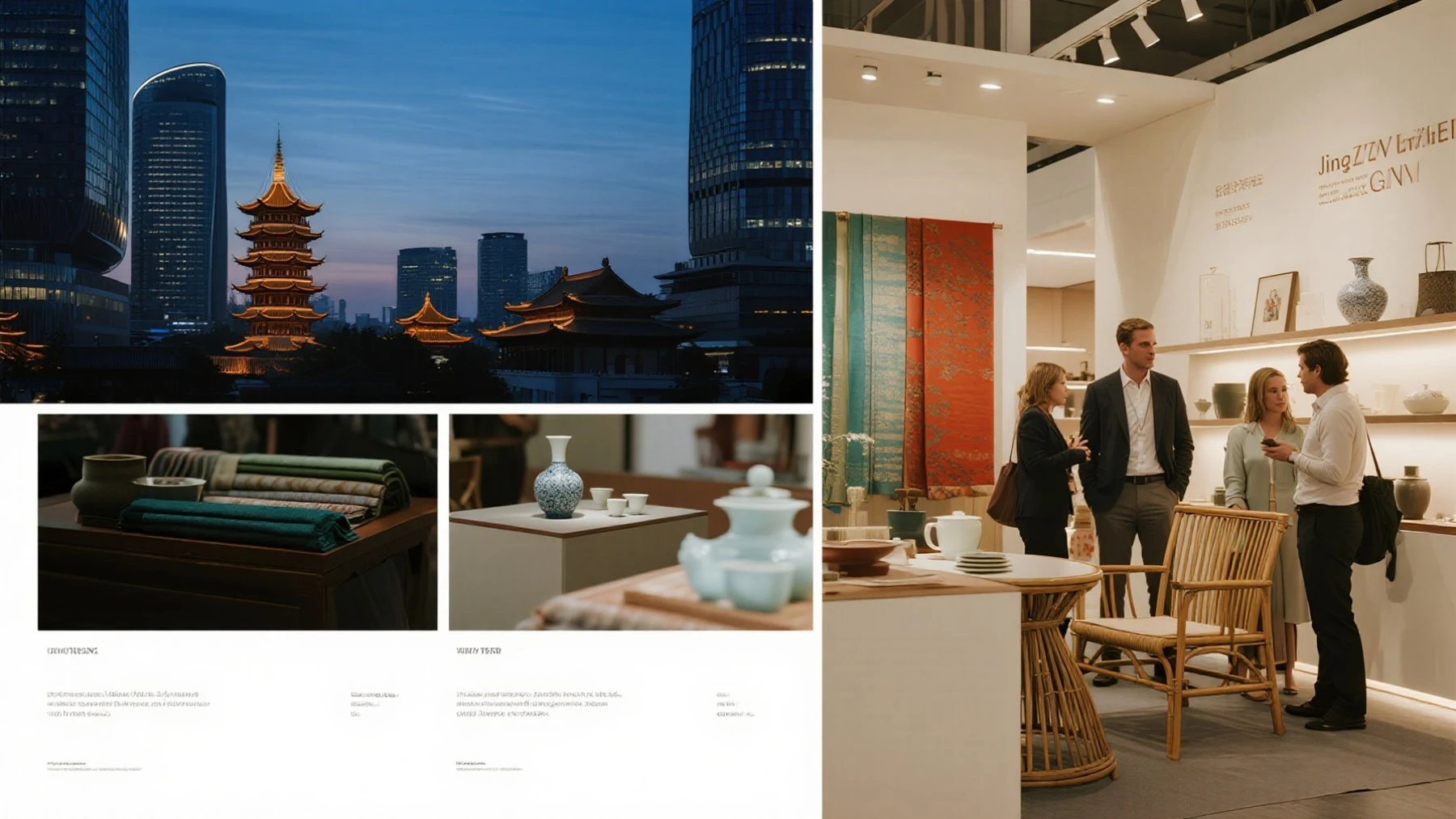 MODERN CHINOISERIE INTERIOR WITH MINIMALIST DETAILS
MODERN CHINOISERIE INTERIOR WITH MINIMALIST DETAILS
Designers mix Chinese symmetry with Western simplicity, crafting homes that feel calm yet creative. You'll see lacquer cabinets next to Scandinavian sofas, calligraphy-inspired wall art hanging over mid-century tables, and bamboo partitions dividing airy California lofts.
This isn't imitation — it's collaboration.
Western consumers today crave meaning in design. They're over disposable décor and cheap trends. The quiet storytelling in Chinoiserie — its ties to nature, balance, and longevity — hits home.
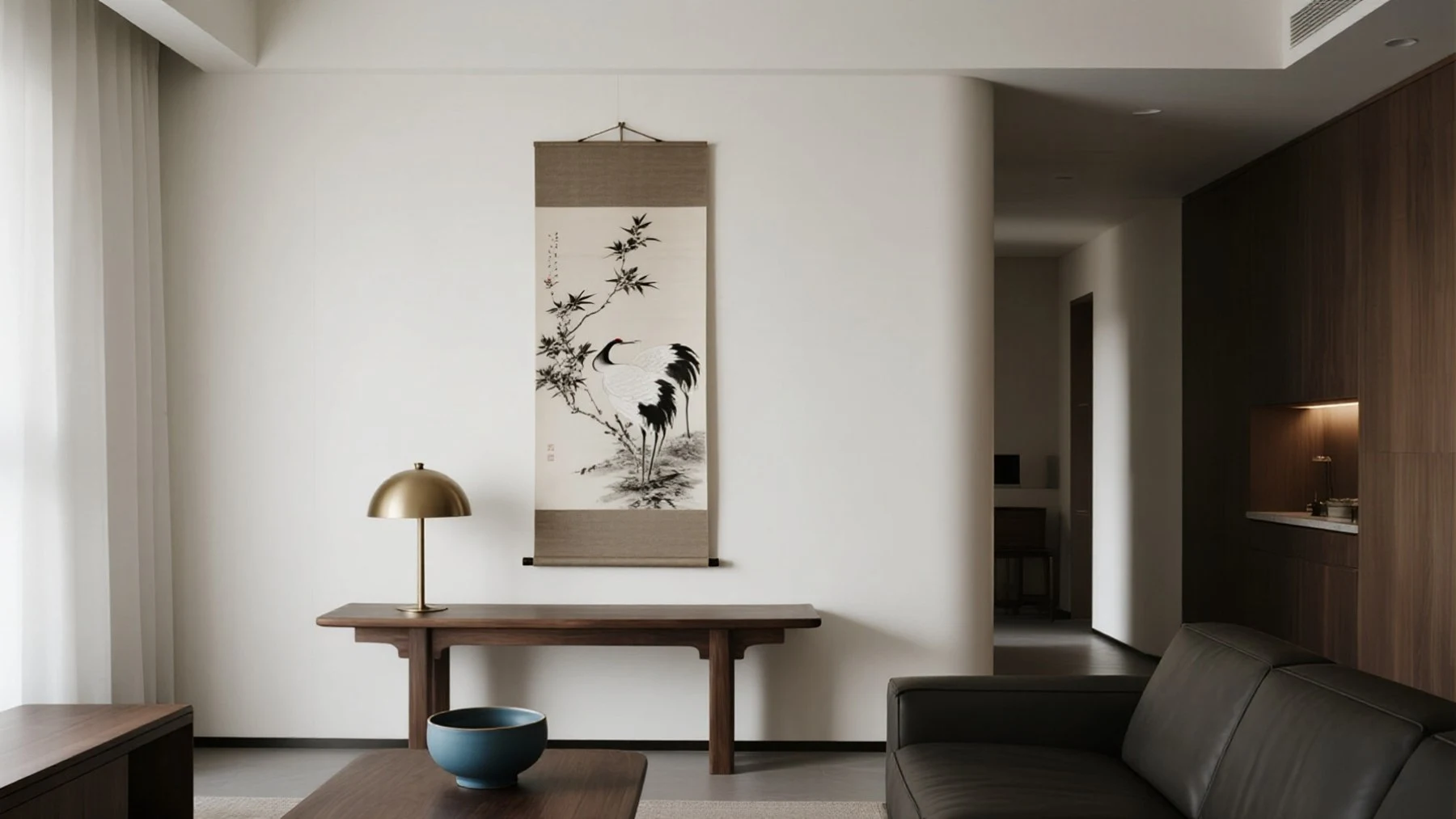 CHINOISERIE FURNITURE AND WESTERN MODERN DESIGN FUSION
CHINOISERIE FURNITURE AND WESTERN MODERN DESIGN FUSION
In short: Chinoiserie feels alive again, and you bet people are noticing.
Why Americans Are Drawn to Chinoiserie — Again
So, why now?
Sure, part of it's aesthetic. The elegance of Chinoiserie offers a visual escape from years of sterile minimalism. But it also scratches a deeper itch — one for cultural connection and emotional calm.
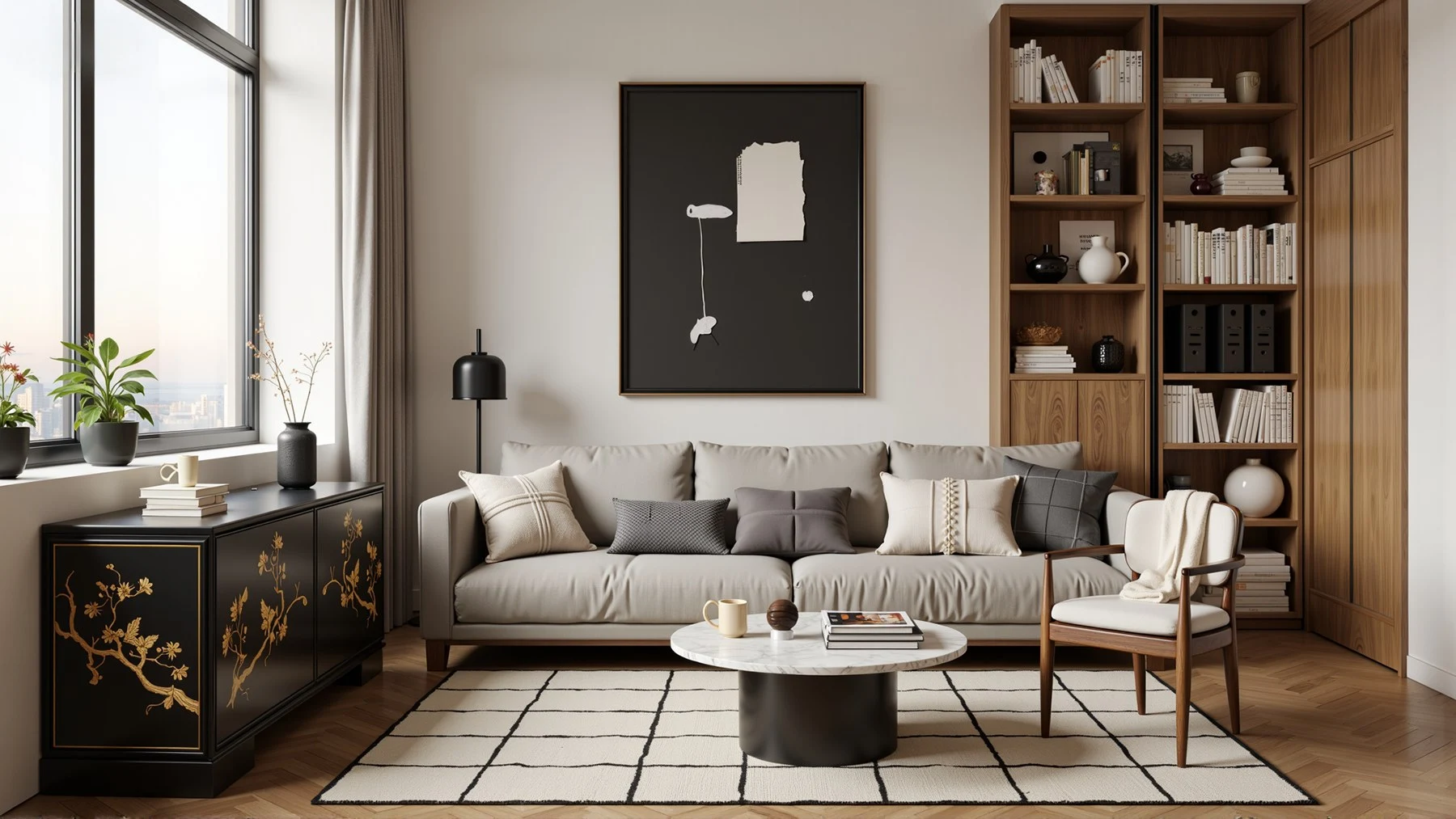 CHINOISERIE FURNITURE AND WESTERN MODERN DESIGN FUSION
CHINOISERIE FURNITURE AND WESTERN MODERN DESIGN FUSION
The American mindset has always bounced between independence and curiosity. As China's voice grows stronger in politics, culture, and tech, Americans are both challenged and intrigued. Chinoiserie becomes a mirror — reflecting fascination, respect, and quiet acknowledgment of power.
Design isn't neutral. A porcelain vase on a New York coffee table can say more about global awareness than a hundred headlines. And Americans, masters of reinvention, are embracing this East-meets-West vibe.
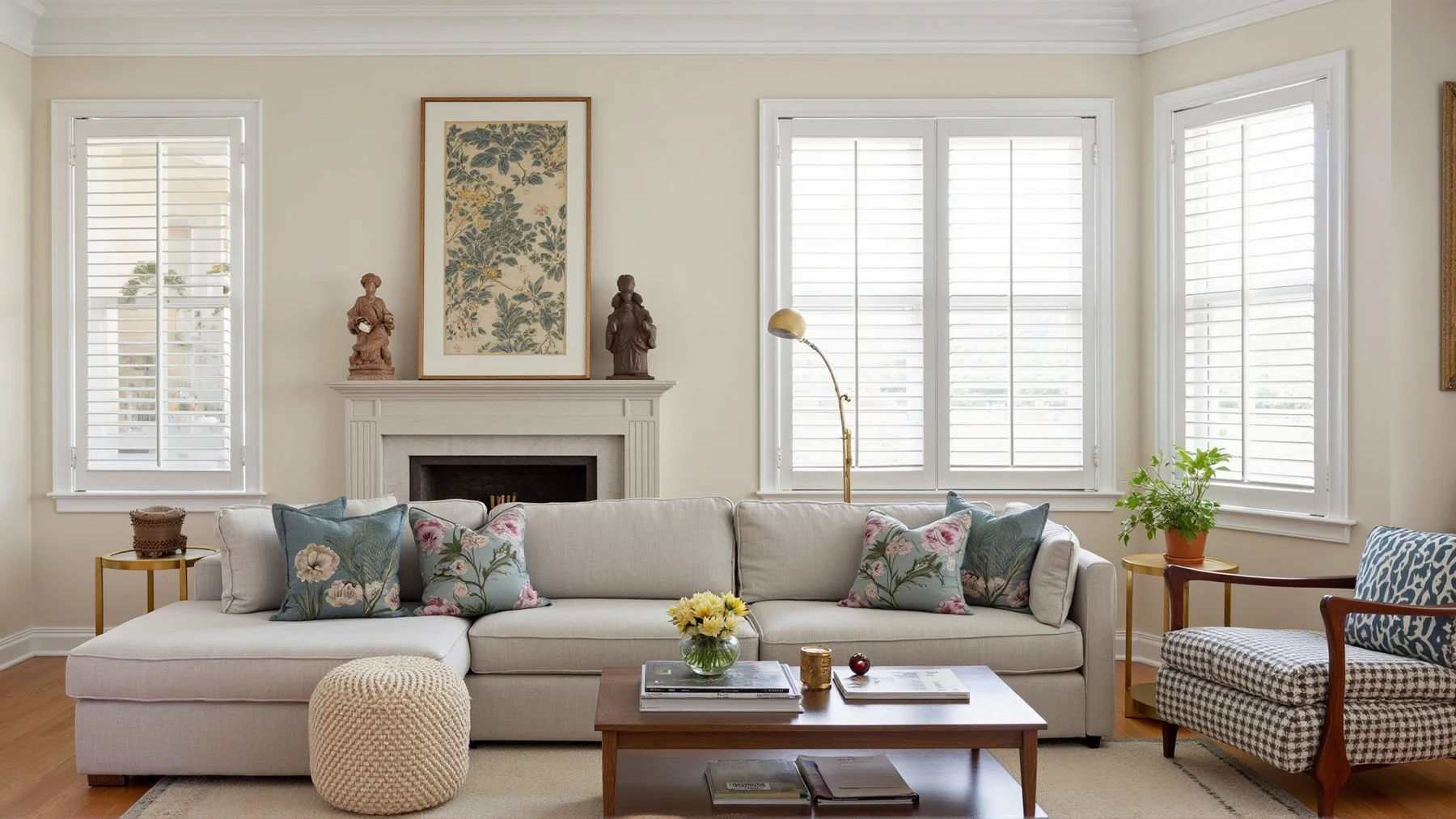 AMERICAN HOMES WITH CHINOISERIE-INSPIRED DECOR
AMERICAN HOMES WITH CHINOISERIE-INSPIRED DECOR
The new Chinoiserie is less about “exotic charm” and more about conversation. It's about finding calm in brushstrokes, balance in geometry, and beauty in cultural exchange.
As one L.A. designer joked, “People aren't buying chairs — they're buying stories.”
Designing with Chinoiserie: Inspiration for Everyday Spaces
Want to bring that story home? Here's how.
Start with color: crisp porcelain whites with cobalt blues, jade greens against soft gold. Add texture — hand-painted wallpaper, embroidered cushions with cranes or cherry blossoms.
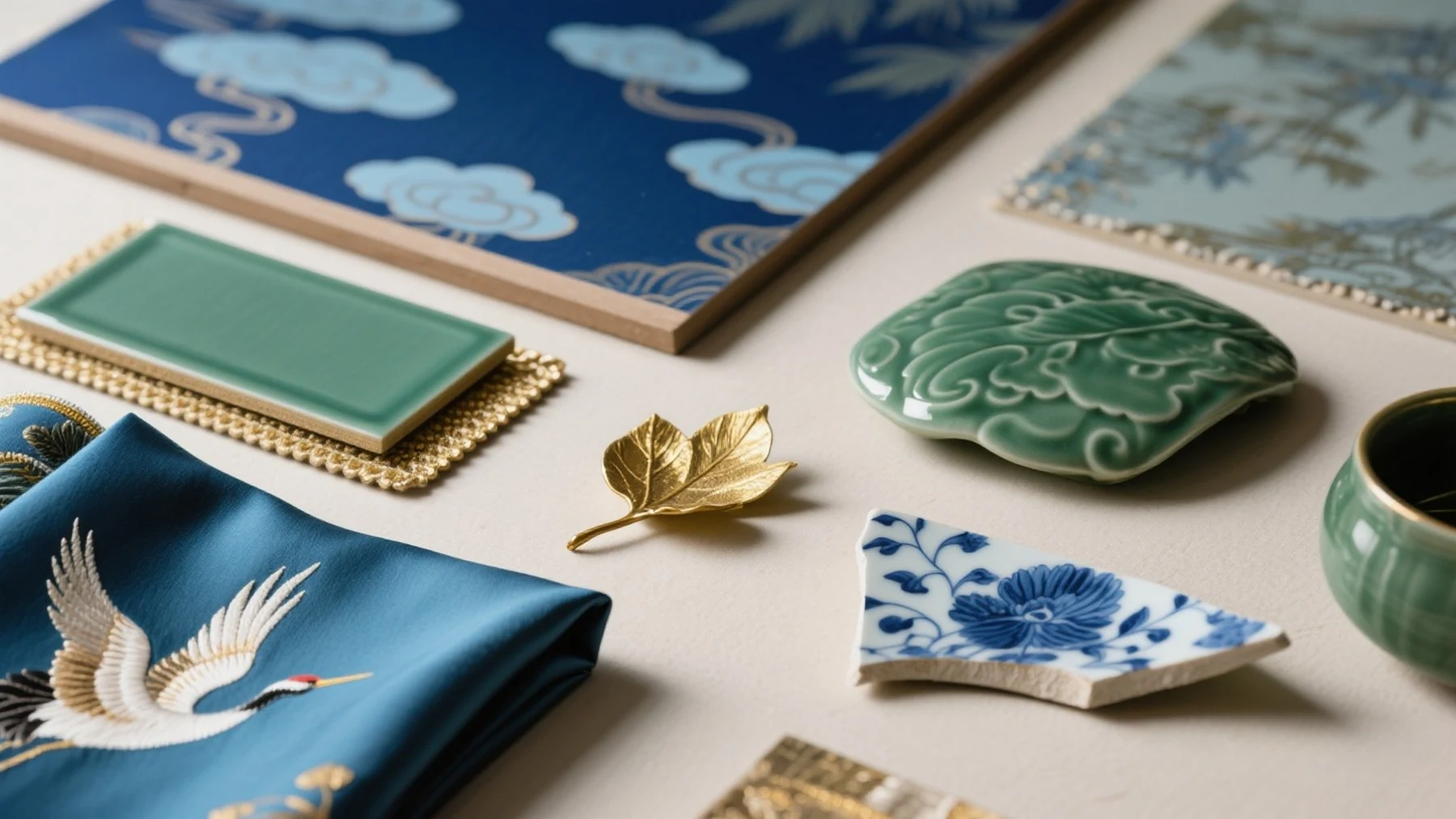 CHINOISERIE COLOR PALETTE WITH BLUE, JADE, AND GOLD TONES
CHINOISERIE COLOR PALETTE WITH BLUE, JADE, AND GOLD TONES
Keep it simple. A single Chinese vase on a modern console speaks louder than a cluttered display. Pair a silk screen with a marble table to say, “I honor tradition, but I live in the now.”
Many designers focus on sustainability, sourcing handmade items from Chinese artisans keeping centuries-old methods alive — Jingdezhen ceramics, Suzhou silk embroidery, and more.
As Western buyers become more conscious of craftsmanship, Chinoiserie isn't just décor; it's appreciation.
Cultural Echoes in a Globalized Era
Here's the twist: Chinoiserie is no longer about fantasy — it's about presence.
Old-school Western Chinoiserie once painted an imagined East. Today, the East paints itself. China's influence in architecture, fashion, and cinema makes that clear.
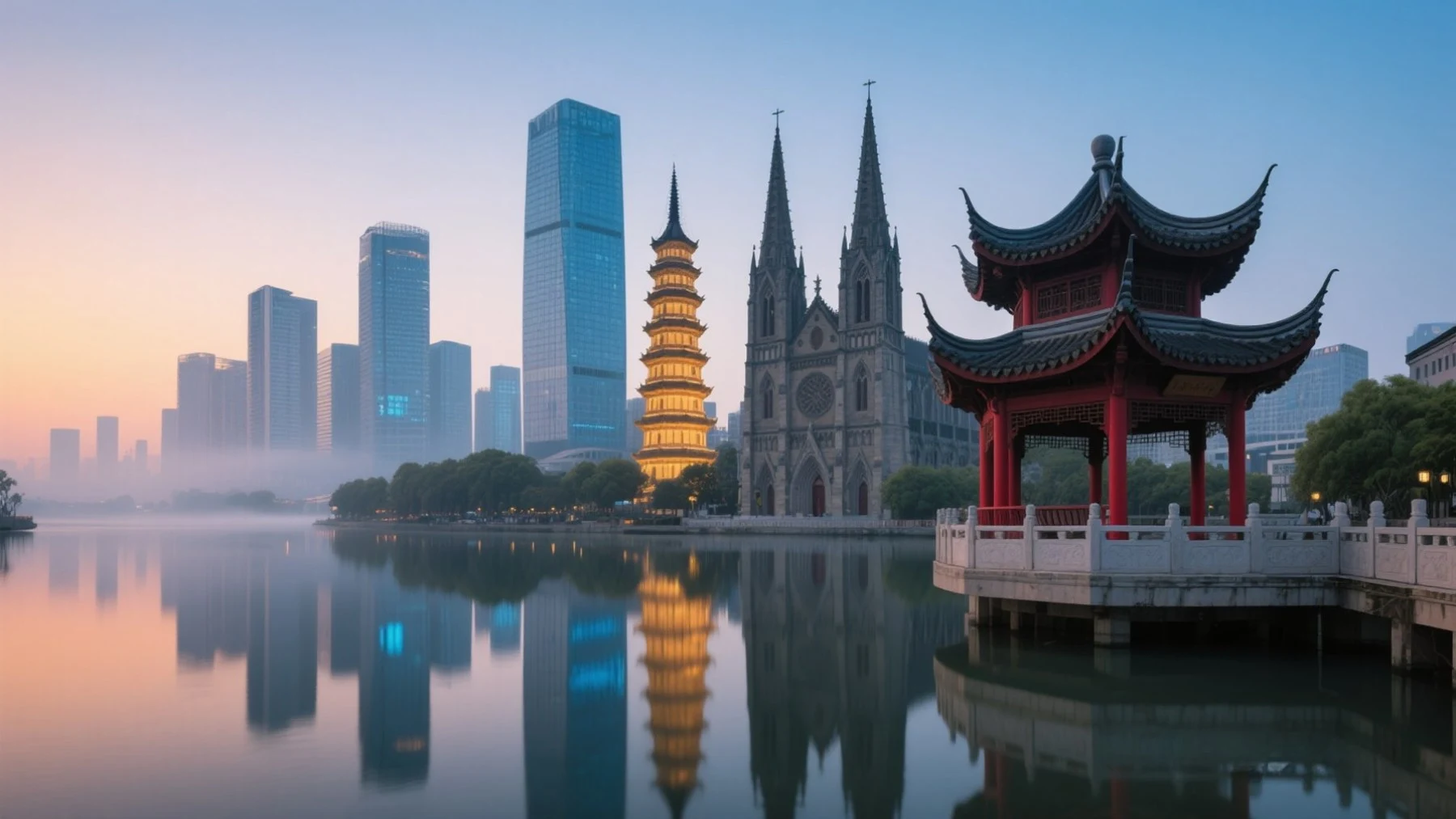 EAST AND WEST ARCHITECTURE BLENDING IN URBAN SKYLINE
EAST AND WEST ARCHITECTURE BLENDING IN URBAN SKYLINE
And just like power follows art, art follows power. The pattern repeats: when Britain ruled the seas, neoclassicism thrived; now, as China's influence grows, Chinoiserie blossoms again.
This isn't dominance — it's balance. Chinese skylines gleam with Western design, while Western homes whisper with Chinese motifs. The dialogue runs both ways.
Designers sense the shift before anyone else. They translate global emotion into color, texture, and light.
Or, as the saying goes, “The writing's on the wall.”
From Decorative Trend to Cultural Reflection
What makes the Chinoiserie revival special is its honesty. It doesn't decorate for decoration's sake — it reflects a changing world.
Behind every dragon and lotus lies a simple truth: China is here to stay. Designers aren't threatened by that; they're inspired.
In a time when headlines often divide East and West, Chinoiserie quietly builds bridges — brushstroke by brushstroke.
Design has always been about dialogue. Right now, that dialogue sounds like East meeting West, porcelain meeting steel, and brushstroke meeting blueprint.
So if someone asks why Americans are falling for Chinoiserie again, the answer's easy:
Because beauty doesn't carry a passport — and the story of China is being told in every home bold enough to listen.
Conclusion: A World Painted in Red and Blue
From Beijing to Brooklyn, the rhythm of the world is shifting. Chinoiserie is no longer imitation — it's invitation.
As China's economy expands and its culture takes center stage, Western designers aren't just watching — they're participating. They're learning that influence doesn't always arrive with noise; sometimes, it glides in with grace.
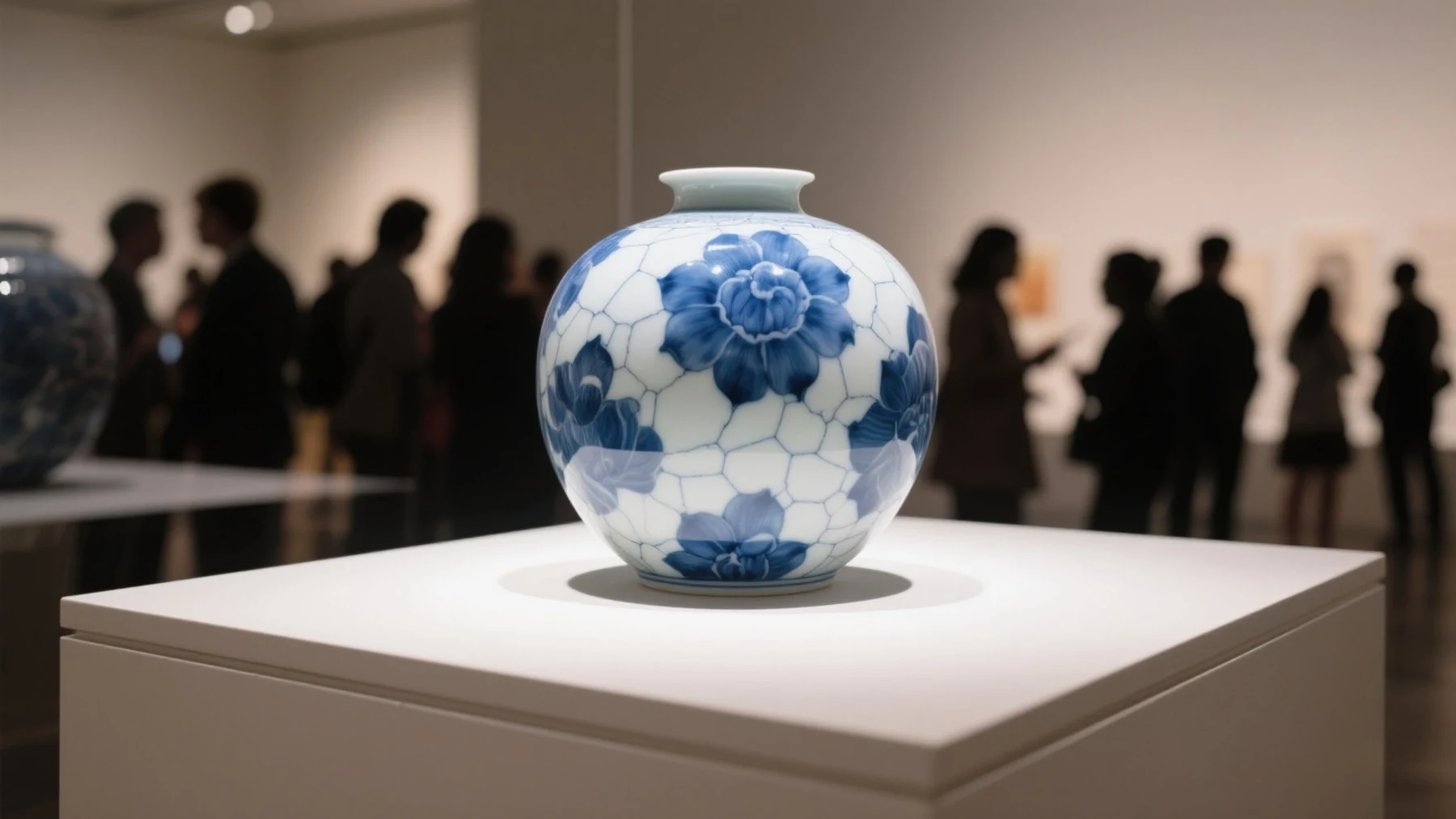 PORCELAIN ART SYMBOLIZING CHINA'S GLOBAL CULTURAL INFLUENCE
PORCELAIN ART SYMBOLIZING CHINA'S GLOBAL CULTURAL INFLUENCE
To borrow one last idiom, “You can't unring that bell.”
Once a culture makes its mark, it echoes forever.
And in this century, that echo sounds a lot like the delicate clink of porcelain —Chinoiserie whispering the story of a rising China.
Authoritative References & Summaries
1. Chinoiserie Aesthetics: Historical Origins and Contemporary Connections Within China's Belt and Road Initiative
Summary:
This academic paper traces Chinoiserie from its 18th-century European origins to its modern reinterpretation under China's Belt and Road Initiative. It explains how cultural exchange, trade, and economic expansion reinforce aesthetic revival and redefined global design relationships.
Link: https://papers.iafor.org/submission79382
APA Reference:
IAFOR. (2022). Chinoiserie Aesthetics: Historical Origins and Contemporary Connections Within China's Belt and Road Initiative. IAFOR Academic Review.
2. How Europe Became Obsessed With Chinese Art — The Collector
Summary:
An illustrated exploration of how 17th–18th century Europe became fascinated with Chinese art and porcelain, and how that fascination echoes in contemporary Western interiors. It contextualizes Chinoiserie as both admiration and cultural projection.
Link: https://www.thecollector.com/chinoiserie-europe-fascination-chinese-art
APA Reference:
The Collector. (2023). How Europe Became Obsessed With Chinese Art. Retrieved from thecollector.com.
3. The Complex History of Chinoiserie — House Beautiful
Summary:
This article explores Chinoiserie's transformation from luxury décor to controversial symbol, and its modern revival as a balanced cultural dialogue. It discusses design ethics, authenticity, and the redefinition of Eastern-inspired aesthetics.
Link: https://www.housebeautiful.com/design-inspiration/a34693915/history-of-chinoiserie
APA Reference:
House Beautiful. (2021). The Complex History of Chinoiserie. Retrieved from housebeautiful.com.
4. How Chinoiserie Inspired Contemporary Design Trends — Invaluable Blog
Summary:
An overview of Chinoiserie's influence in modern interior design, showing how traditional Chinese motifs (peonies, cranes, pagodas) blend with minimalist Western aesthetics. It links global design trends with growing cross-cultural respect.
Link: https://www.invaluable.com/blog/chinoiserie
APA Reference:
Invaluable. (2022). How Chinoiserie Inspired Contemporary Design Trends. Retrieved from invaluable.com.
5. Beyond Chinoiserie: Artistic Exchange between China and the West (1796-1911) — 19th Century Art Worldwide
Summary:
A peer-reviewed art history paper analyzing the artistic dialogue between China and the West from the late Qing to early Republic era, illustrating how the flow of objects and ideas redefined artistic identity on both sides.
Link: https://19thc-artworldwide.org/pdf/python/article_PDFs/NCAW_943.pdf
APA Reference:
ArtWorldWide. (2019). Beyond Chinoiserie: Artistic Exchange between China and the West (1796–1911). 19th Century Art Worldwide.
6. Fashion, Chinoiserie and Modernism — British Modernism and Chinoiserie
Summary:
A scholarly book chapter exploring the intersection between British modernism, fashion, and Chinoiserie. It shows how cultural borrowing evolved from exoticism to collaboration, reflecting shifts in global power and taste.
Link: https://www.degruyterbrill.com/document/doi/10.1515/9780748690961-011/html
APA Reference:
Burton, A. (2014). Fashion, Chinoiserie and Modernism. In British Modernism and Chinoiserie (Ch. 7). De Gruyter.
7. Chinoiserie: The Western Fascination with Chinese Art & Design — Zen Art Gallery
Summary:
A design-centered blog that revisits Western fascination with Chinese craftsmanship, porcelain, and symbolism. It connects Chinoiserie's revival to modern interior design, global cultural respect, and sustainable artistry.
Link: https://www.zen-art-gallery.com/blog/chinoiserie-the-western-fascination-with-chinese-art-and-design
APA Reference:
Zen Art Gallery. (2023). Chinoiserie: The Western Fascination with Chinese Art & Design. Retrieved from zen-art-gallery.com.

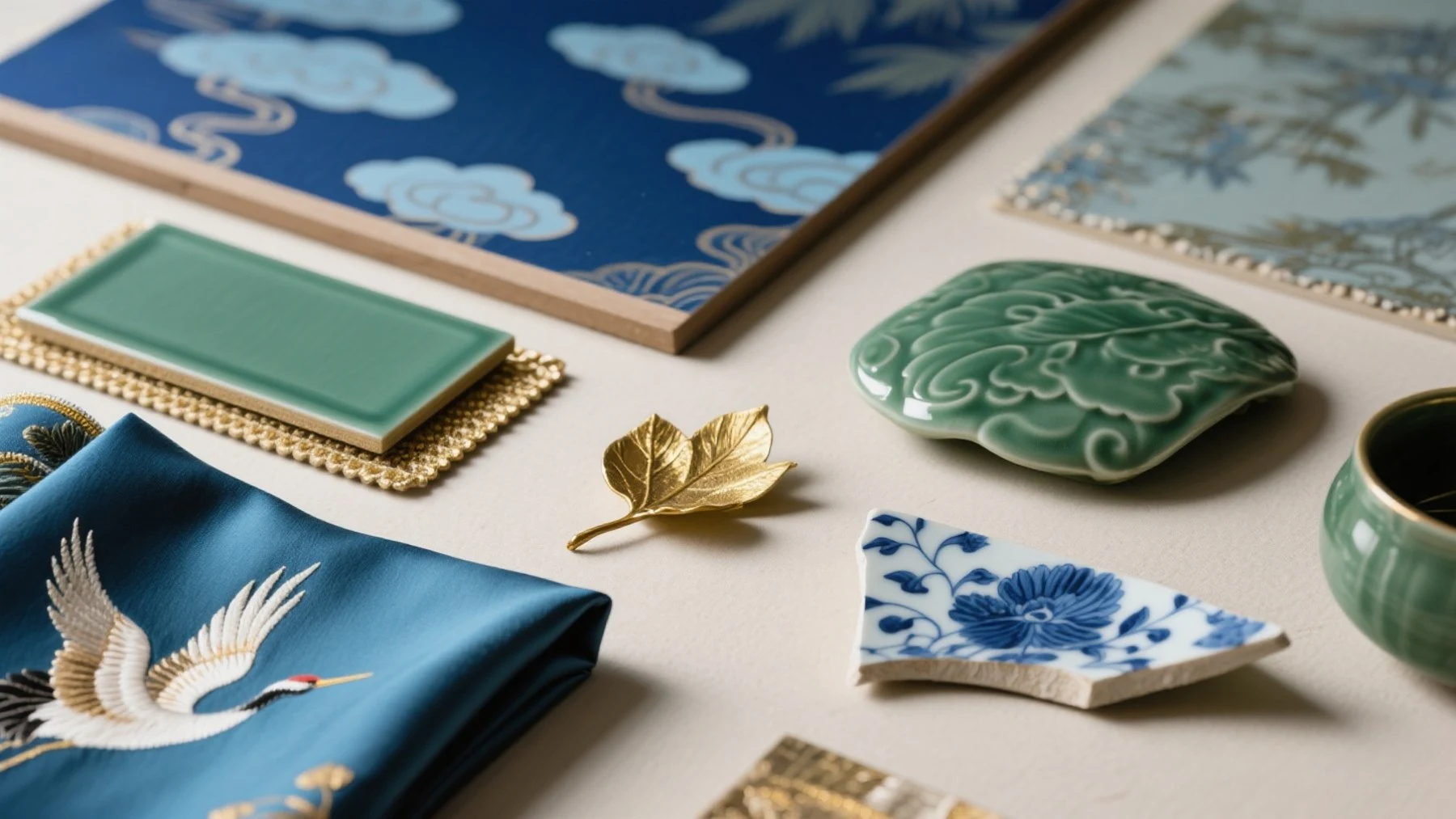
_1757380852909.webp)
_1757302147610.webp)



